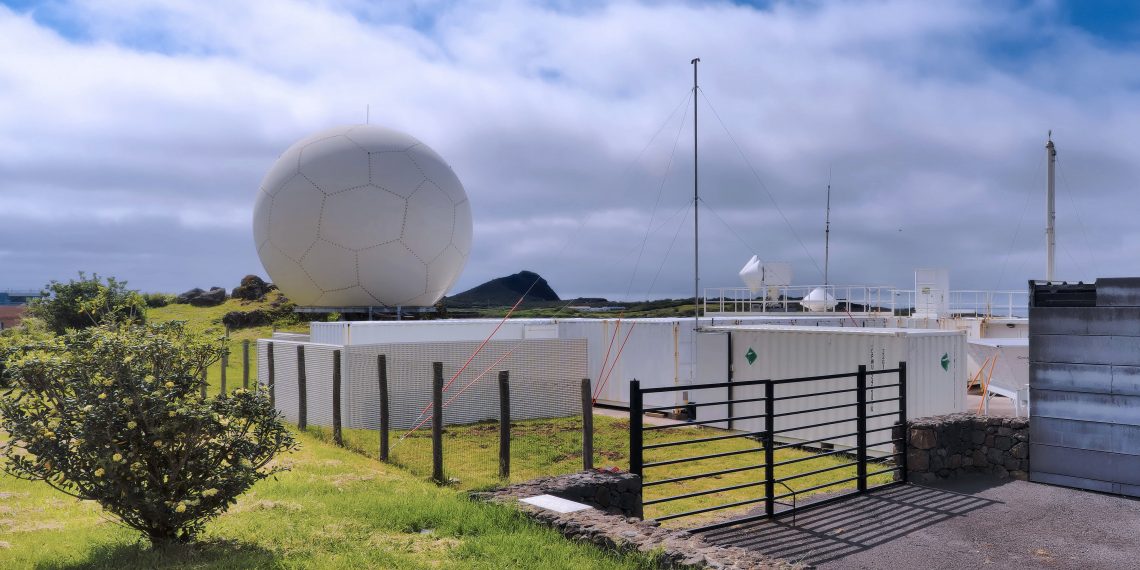For the past 10 years, INESC TEC has been continuously monitoring environmental radioactivity on Graciosa Island, part of the Azores archipelago. Data collected by the Institute’s research team indicates increased soil moisture and helps distinguish natural variations from potential nuclear threats.
Since 2015, INESC TEC has been leading this pioneering campaign in collaboration with the Instituto Dom Luiz (University of Lisbon) and the University of the Azores. The data is collected automatically and without interruption at the ENA (Eastern North Atlantic) station – a scientific infrastructure located in the middle of the Atlantic Ocean.
The results of this decade-long observation efforts provide far more than just a snapshot of background radiation. According to Susana Barbosa, the INESC TEC researcher in charge of the endeavour, “the time series shows a downward trend in radioactivity levels from 2021 onwards, which suggests greater soil moisture – possibly associated with an increase in the frequency and intensity of storms.” This is just one of many climate indicators that can be drawn from the collected data, which is publicly available here and promotes open access to scientific information.
Another noteworthy finding involves peaks in gamma radiation frequently observed after rainfall events. These phenomena occur when precipitation brings radionuclides from the atmosphere down to the ground (a natural process that can easily be mistaken for anomalous events, e.g., accidents at nuclear power plants). Systematic monitoring, combined with detailed meteorological data and the unique location of the ENA station – isolated from continental sources of pollution – further boost the ability to distinguish between natural and artificial variations in radioactivity, thereby reinforcing civil and environmental protection measures.
Beyond surveillance, this work has also advanced scientific research in fields like volcanology, seismology, climatology, and hydrology. Radon gas, for instance, is used as a natural tracer for studying terrestrial and atmospheric phenomena.
The future of the campaign and expansion with cutting-edge technology
Building on this campaign, a new monitoring initiative is currently underway as part of the European NuClim project (Nuclear observations to improve Climate research and GHG emission estimates), coordinated by INESC TEC. Susana Barbosa, who also leads this project, highlighted that “this campaign proves a significant expansion of the existing environmental radioactivity monitoring network on Graciosa, with the installation of various state-of-the-art solutions for measuring atmospheric radon gas, cosmic radiation, and cosmogenic radionuclides.”
The data collected under this new initiative will enable major advances in areas such as climate research, improvement of radiation protection measures, and better capability for monitoring and responding to nuclear-related events.
In addition to the publicly available data through an open-access repository, the knowledge generated over these years has also been published in international scientific journals like the European Physical Journal Nuclear Sciences and Technologies and the Journal of Environmental Radioactivity.
The researcher mentioned in this news piece is associated with INESC TEC.



 News, current topics, curiosities and so much more about INESC TEC and its community!
News, current topics, curiosities and so much more about INESC TEC and its community!